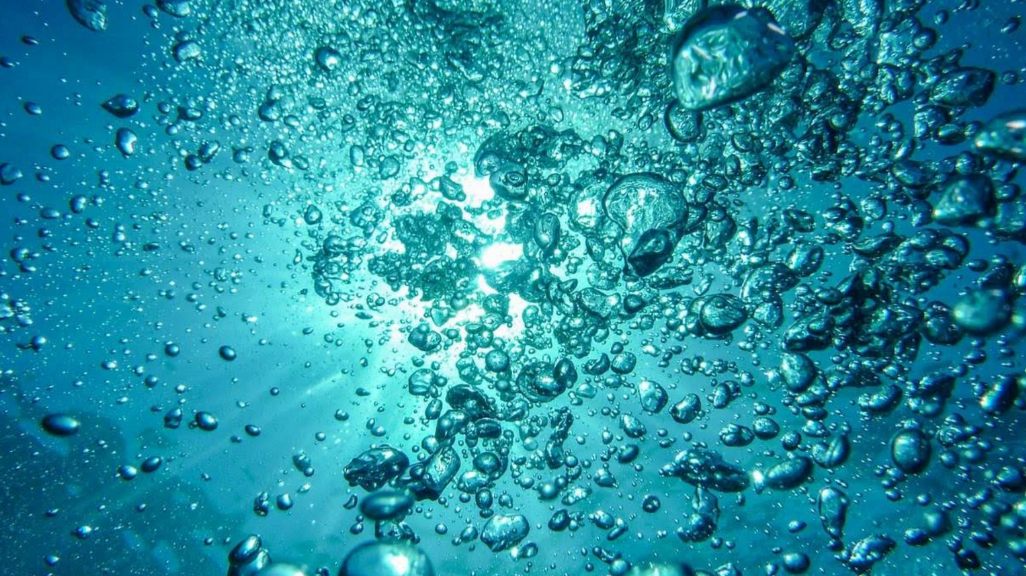story by Helen Hill

This month we feature a team from Georgia Tech who have been revisiting early modeling experiments using MITgcm to take a closer look at oxygen uptake during deep convection.
The concentration of dissolved oxygen (O2) in seawater plays a fundamental role in diverse chemical and biological processes throughout the water column, with the balance between physical supply and biological consumption controlling the O2 level of the interior ocean. In polar regions the only direct source for O2 in the deep ocean is deep convection, in which oxygenated surface water, driven by extreme buoyancy loss, is energetically exchanged for less dense water at depth, in tight vertical chimneys of overturning.
In their new study, researchers Daoxun Sun, Takamitsu Ito, and Annalisa Bracco working at the Georgia Institute of Technology, School of Earth and Atmospheric Sciences, in Atlanta, GA, develop a theoretical framework describing the uptake of O2 during open-ocean deep convection and test it against a suite of MITgcm-based numerical sensitivity experiments.

Daoxun Sun is a graduate student in the Earth and Atmospheric Sciences Department at Georgia Tech. He’s been using MITgcm for about 3 years since since starting his PhD studies. Sun loves playing basket ball and video games during his spare times. His advisor is Dr. Annalisa Bracco.
To test their theoretical predictions, Sun et al. return to early numerical deep convection studies using MITgcm by Jones and Marshall (1993) overlaying them with their oxygen exchange model. As in Jones and Marshall (1993), they run in nonhydrostatic mode to explicitly resolve the dynamics of the deep convection in a cubic domain 32km x 32km x 2km with periodic boundary conditions in the x and y directions (horizontal resolution of 250 m) and 41 vertical levels having thicknesses increasing from 10 m at the surface to 100 m near the bottom. To induce convection cooling is applied to a patch at the sea surface within a disk of 8 km radius. For full details see Sun et al.
In keeping with their expectations, the team’s numerical results confirm that both the duration and the intensity of the wintertime cooling contribute to total O2 uptake for a given buoyancy loss, with stronger cooling leading to deeper convection allowing oxygenation to penetrate to deeper depths. Longer cooling duration was also observed to increase the total amount of O2 taken up over a convective season.
Additionally the researchers found that the bubble-mediated influx of O2 tends to weaken the diffusive influx by shifting the air-sea disequilibrium of O2 toward supersaturation. They found that the degree of compensation between the diffusive and bubble-mediated gas exchange depended on a dimensionless number measuring the relative strength of oceanic vertical mixing and the gas transfer velocity. However, for strong convective mixing, which may occur under strong cooling, the researchers saw a reduction in the degree of compensation with the two components of gas exchange together driving exceptionally strong oceanic O2 uptake.
To find out more about this work contact Daoxun
This Month’s Featured Publication
- Daoxun Sun, Takamitsu Ito, Annalisa Bracco (2017), Oceanic Uptake of Oxygen During Deep Convection Events Through Diffusive and Bubble-Mediated Gas Exchange, Global Biogeochemical Cycles, Volume 31, Issue 10, October 2017, Pages 1579–1591, doi: 10.1002/2017GB005716
Other New Publications this Month
Ali Abbasi, Frank Ohene Annor, Nick van de Giesen (2017), A framework to simulate small shallow inland water bodies in semi-arid regions, Advances in Water Resources, Volume 110, Pages 77-96, doi: 10.1016/j.advwatres.2017.09.023
Mattia Almansi, Thomas W. N. Haine, Robert S. Pickart, Marcello G. Magaldi, Renske Gelderloos, Dana Mastropole (2017), High-Frequency Variability in the Circulation and Hydrography of the Denmark Strait Overflow from a High-Resolution Numerical Model, Journal of Physical Oceanography, doi: 10.1175/JPO-D-17-0129.1
Liam Brannigan, David P. Marshall, Alberto C. Naveira Garabato, A. J. George Nurser, Jan Kaiser (2017), Submesoscale Instabilities in Mesoscale Eddies, Journal of Physical Oceanography, doi: 10.1175/JPO-D-16-0178.1
Raffaele Ferrari, Louis-Philippe Nadeau, David P. Marshall, Lesley C. Allison, Helen L. Johnson (2017), A Model of the Ocean Overturning Circulation with Two Closed Basins and a Reentrant Channel, Journal of Physical Oceanography, doi: 10.1175/JPO-D-16-0223.1
Jean-Claude Gascard, Kathrin Riemann-Campe, Rüdiger Gerdes, Harald Schyberg, Roger Randriamampianina, Michael Karcher, Jinlun Zhang, Mehrad Rafizadeh (2017), Future sea ice conditions and weather forecasts in the Arctic: Implications for Arctic shipping, Volume 46, Supplement 3, pp 355–367, doi: 10.1007/s13280-017-0951-5
Jordi Isern-Fontanet, Joaquim Ballabrera-Poy, Antonio Turiel, and Emilio García-Ladona (2017), Remote sensing of ocean surface currents: a review of what is being observed and what is being assimilated, Nonlin. Processes Geophys., 24, 613–643, doi: 10.5194/npg-24-613-2017
Angus H.Gibson, Andrew McC.Hogg, Andrew E.Kiss, Callum J.Shakespeare, AlistairAdcroft (2017), Attribution of horizontal and vertical contributions to spurious mixing in an Arbitrary Lagrangian–Eulerian ocean model, Ocean Modelling, Volume 119, November 2017, Pages 45-56, doi: 10.1016/j.ocemod.2017.09.008
Polona Itkin and Thomas Krumpen (2017), Winter sea ice export from the Laptev Sea preconditions the local summer sea ice cover and fast ice decay, The Cryosphere, 11, 2383–2391, doi: 10.5194/tc-11-2383-2017
James R. Jordan, Paul R. Holland,, Dan Goldberg, Kate Snow, Robert Arthern, Jean-Michel Campin, Patrick Heimbach, Adrian Jenkins (2017), Ocean-Forced Ice-Shelf Thinning in a Synchronously Coupled Ice-Ocean Model, Journal of Geophysical research Oceans, doi: 10.1002/2017JC013251
Xinfeng Liang, Michael Spall, Carl Wunsch (2017), Global Ocean Vertical Velocity From a Dynamically Consistent Ocean State Estimate, Journal of Geophysical Research Oceans, Volume 122, Issue 10, October 2017 , Pages 8208–8224, doi: 10.1002/2017JC012985
Félix Margirier, Anthony Bosse, Pierre Testor, Blandine L’Hévéder, Laurent Mortier, David Smeed (2017), Characterization of Convective Plumes Associated With Oceanic Deep Convection in the Northwestern Mediterranean From High-Resolution In Situ Data Collected by Gliders, Journal of Geophysical Research – Oceans, doi: 10.1002/2016JC012633
Jan-Dirk Matthießen, Richard John Greatbatch, Martin Claus, François Ascani, Peter Brandt (2017), The emergence of equatorial deep jets in an idealised primitive equation model: an interpretation in terms of basin modes, Volume 67, Issue 12, pp 1511–1522, doi: 10.1007/s10236-017-1111-y
Alexandre Pohl, David A. T. Harper, Yannick Donnadieu, Guillaume Le Hir, Elise Nardin, Thomas Servais (2017), Possible patterns of marine primary productivity during the Great Ordovician Biodiversification Event, Lethaia, doi: 10.1111/let.12247
Timour Radko and Cassandra Sisti (2017), Life and Demise of Intrathermocline Mesoscale Vortices, Journal of Physical Oceanography, doi: 10.1175/JPO-D-17-0044.1
Anna Savage (2017), Sea Surface Height Signatures of Internal Gravity Waves, U. Michigan Doctoral Dissertation
Michael A. Spall, Rebecca H. Jackson, Fiammetta Straneo (2017), Katabatic Wind-Driven Exchange in Fjords, Journal of Geophysical Research Oceans, Volume 122, Issue 10, October 2017, Pages 8246–8262, doi: 10.1002/2017JC013026
Atul Srivastav, Suneet Dwivedi, Alok Kumar Mishra (2017), Investigating the role of air-sea forcing on the variability of hydrography, circulation, and mixed layer depth in the Arabian Sea and Bay of Bengal, Oceanologia, doi: 10.1016/j.oceano.2017.10.001
Steinrueck, Maria Elisabeth; Parmentier, Vivien; Showman, Adam P.(2017), The effects of disequilibrium carbon chemistry in general circulation models of hot Jupiters, American Astronomical Society, DPS meeting #49, id.402.03,
Tobias Weber, MaikThomas (2017), Tidal dynamics and their influence on the climate system from the Cretaceous to present day, Global and Planetary Change
Volume 158, November 2017, Pages 173-183, doi: 10.1016/j.gloplacha.2017.09.019
Y. Ye, C. Völker (2017), On the Role of Dust-Deposited Lithogenic Particles for Iron Cycling in the Tropical and Subtropical Atlantic, Global Biogeochemical Cycles, Volume 31, Issue 10, October 2017, Pages 1543–1558, doi: 10.1002/2017GB005663
Young R. Yi , Sonya Legg, and Robert H. Nazarian (2017), The Impact of Topographic Steepness on Tidal Dissipation at Bumpy Topography, Fluids 2017, 2(4), 55; doi: 10.3390/fluids2040055
Xuefeng Zhang, Chaohui Sun, Chang Liu, Lianxin Zhang, Caixia Shao, Xiaoshuang Zhang, and Yuxin Zhao (2017), Evaluation of the Impact of Argo Data on Ocean Reanalysis in the Pacific Region, Hindawi, Advances in Meteorology, Volume 2017, Article ID 7314106, 12 pages, doi: 10.1155/2017/7314106
Do you have news about research using MITgcm? We are looking for contributions to these pages. If you have an interesting MITgcm project (ocean, atmosphere, sea-ice, physics, biology or otherwise) that you want to tell people about, get in touch. To make a post, contact Helen

